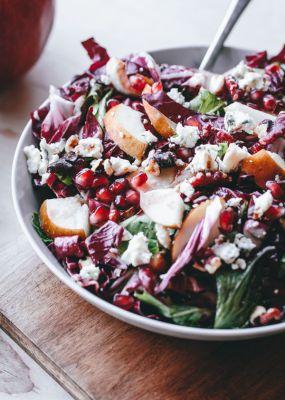New knowledge and ongoing advances in nutrition science converge with our perennial quest for enhanced health and well-being. At the start of every year, we see predictions about emerging nutrition trends.
While these trends may offer promising pathways to improved wellness for some people, it’s important to recognize the complexity of individual nutrition needs and find out if there are any potential risks before jumping on the bandwagon.
6 Nutrition Trends for 2024
We take a closer look at six nutrition trends that are likely to become more dominant in 2024 with insights and tips from Registered Dietitians and spokespeople for ADSA (Association for Dietetics in South Africa).
Trend 1 – Demystifying Intermittent Fasting
Intermittent fasting, which is rooted in ancient practices, has seen a resurgence in popularity for both weight loss and general health benefits. This involves periodic fasting from 8 to 16 hours per day without food or drink to prompt the body to switch from carbohydrates to fat utilization for energy.
Registered Dietitian, Carmen Basson says,
“While intermittent fasting can lead to short-term weight loss, at just 3 to 8%, its efficacy is comparable to other diet restriction methods. Potential benefits may include changes in appetite hormones, particularly leptin reduction, which may aid those with overweight and obesity.
There is research to show that intermittent fasting may be beneficial for those individuals living with Type 2 diabetes as it helps to improve blood sugar control. However, the practice doesn’t appear superior to other methods for reducing heart disease risk factors.”
One of the pitfalls of intermittent fasting can be the tendency to binge on unhealthy foods during the eating window and care must be taken to consume good quality, nutrient-dense meals and snacks. Another concern is where the weight loss due to intermittent fasting comes from.
Carmen explains,
“All types of intermittent fasting regimes have been shown to help people consume less energy which in turn creates an energy deficit. However, if the weight loss you experience comes from a reduction in muscle mass, this may lead to a slower metabolism which can cause a weight plateau and make further weight loss harder.
The lower muscle mass may also interfere with strength and stamina resulting in unsatisfying gym, exercise, or sports sessions. We ideally want to lose weight from our fat stores instead. What tends to be important here is pairing intermittent fasting with adequate exercise training programs, to ensure that muscle mass is maintained.”
Carmen’s intermittent fasting focus for 2024:
“Be careful of jumping from one weight loss trend to the next, as this can trigger or exacerbate a poor relationship with food and with your body. In the longer term, severe diet restriction regimes, such as intermittent fasting, may lead to disordered eating for some. This is why consulting a medical professional or registered dietitian before committing to such diets is the safest approach. If the focus should be on your health, then your weight loss goals will follow.
A number on a scale is not the only indicator of health or happiness.”
Trend 2 – Exploring eating for mental health
In our fast-paced world, the pursuit of a balanced and fulfilling life has led many to explore unconventional paths, including the relationship between nutrition and mental well-being.
Registered Dietitian Elske Rich sheds light on the rising trend of ‘eating for mental health’, emphasizing the impact of diet on emotional well-being. She says,
“A balanced lifestyle should not only include regular exercise but also be rich in nutritious food that has a positive outcome on mental health.
Eating for mental health is reaching new heights as the link between what you eat and how this affects ‘happy hormones’ in the body is becoming more popular. Your gut health, where most of these happy hormones are produced, is directly linked to your mood and is affected by what you eat.”
Eating for mental health includes vitamin D-rich foods, whole grains, fruits and vegetables, and unsaturated fats like omega-3 fatty acids as research has shown that these foods may have a positive impact on our mood and mental health. Elske advises,
“We have to think about how we can add these foods to each meal by making practical food swops, such as choosing wholegrains over refined ones and changing out saturated fats like coconut oil or butter for olive or canola oil, which are unsaturated fats.
Examples of vitamin D-rich foods include tanned mushrooms (achieved by exposing edible mushrooms to sunlight for 10 minutes before cooking) and eggs. In addition, omega 3 fatty acids can be included in your diet by regularly consuming fish and nuts.”
Elske’s eating for mental health focus for 2024:
“Dietary changes are not a substitute for seeking mental healthcare when you need professional support. People may be under the misapprehension that eating for mental health can make a difference overnight. As with any new lifestyle change, it takes consistency and working at it every day. Getting your mental health and emotional well-being to an optimum level will take some time and adaptation.
Overall, there are, fortunately, no downsides to this trend, and over the long-term taking up eating for mental health is worth the commitment.”
Trend 3 – Unpacking the highly processed food debate
Last year, new studies emerged to challenge the conventional wisdom of avoiding highly and ultra-processed foods, suggesting they might not pose significant health risks.
Registered Dietitian and ADSA Spokesperson Kgadi Moabelo acknowledges that registered dietitians and nutritionists express diverse views with some arguing that moderation is key, while others emphasize ongoing avoidance of these foods.
She says,
“Despite recent, conflicting studies, most experts agree that prioritizing whole foods remains a foundation for a healthy diet. There have been widespread efforts by food manufacturers to reduce the amounts of certain ingredients such as sugar and salt in highly or ultra-processed foods, but these foods can still pose health risks.
 The inclusion of artificial additives, preservatives, and low-nutrient-density ingredients remains a concern. These processed foods often lack essential nutrients and the fiber found in whole foods, potentially contributing to issues like overconsumption, weight gain, and potential long-term health problems.”
The inclusion of artificial additives, preservatives, and low-nutrient-density ingredients remains a concern. These processed foods often lack essential nutrients and the fiber found in whole foods, potentially contributing to issues like overconsumption, weight gain, and potential long-term health problems.”
Kgadi’s resolve on the highly processed foods debate for 2024:
“There is currently no consensus when it comes to highly and ultra-processed foods. It’s important to note that the rise of plant-based eating introduces a new dimension to the processed food debate. Dietitians highlight that not all plant-based options are created equal.
Highly processed plant-based foods, laden with additives and lacking in nutritional value, are still considered less healthy. Emphasizing whole, minimally processed plant foods remains a key tenet for those pursuing plant-based diets.”
Trend 4 – Embracing plant-based eating
Carmen says,
“It’s important to note that the movement towards more plant-based eating doesn’t imply vegetarianism or veganism. It simply means eating more foods derived from plants. When it comes to nutrition trends, there are often pitfalls and concerns, but the plant-based eating trend is widely championed by dietitians. I mean what’s not to love?
This is a healthy, sustainable way of eating, and ensures that you are still consuming all food groups, if you prioritize plant-based whole foods while eating moderate quantities of other foods.”
We’ve all heard of the importance of getting our ‘5-a-day’ when it comes to the consumption of vegetables and fruits. Carmen notes that this can be a good place to start — but it may be an outdated concept as it doesn’t consider the 40 trillion microbes living in our gut, which all need different types of plant foods to flourish.
Carmen says, “I have been following Dr Megan Rossi and her focus on dietary diversity as each type of beneficial gut bacteria performs a different job inside of our gut, and each likes a different type of plant food.
She and her team have come up with this amazing system to rather aim for 30 plant points a week which translates the science of plant diversity into a plant point system. This is essentially a fun and useful way to tally up the different plants consumed across the week to give you a score. Each plant type counts as 1 point, while herbs and spices count as ¼ points.
This helps to support gut biome diversity which in turn leads to increased immune cells, increases resilience to infections, strengthens the gut barrier, improves mental health, and balances blood glucose.”
Carmen’s plant-based eating focus for 2024:
“Commit to a simple change such as meatless Mondays. These can be tasty meals that include legumes such as lentils, baked beans, chickpeas, or butter beans. If this is a little extreme for you, start with dishes containing small portions of fish or even chicken to reduce your red meat intake.
You will find that mushrooms and brinjals make excellent meat substitutes for numerous meal and sauce recipes. Make a habit of choosing higher fiber whole grains, which means looking at the food product label and choosing options with greater than 6 grams of fiber per 100g of a product. Eat plenty of vegetables and fruits. This can be achieved by making vegetables and salads the basis of each meal and include fruits as well as nuts as snacks.”
Trend 5 – Approaching routine probiotic supplementation with caution
In 2023, the intensity of the focus on gut health was amplified across social media channels. TikTok-type ‘gut health gurus’ gained millions of followers offering dubious advice on treating gastrointestinal issues with everything from green juices to olive oil.
For those looking for solutions and improved gut health, routinely supplemented with convenient and accessible probiotic products has become part of their strive for wellness.
Elske says,
“The claimed benefits of probiotic use may include improved gut health, mental well-being, and a boost to the immune system response which has become important to many in the aftermath of COVID-19. However, it is important to note that more research is needed on the mechanisms at play in the body when it comes to consumed probiotics and intestinal immune cells.”
Probiotic supplementation is traditionally prescribed by medical practitioners as an acute measure to protect the vulnerable immune systems of children and the elderly or in the case of antibiotic use which can negatively impact the gut biome.
Elske points out that the current trend to self-medicate probiotic supplements daily is unlikely to lead to overconsumption, but routine use may cause side effects such as uncomfortable bloating and nausea.
Elske’s probiotic supplementation focus for 2024:
“It’s important to know that probiotic supplements are not strictly regulated, leading to variations in quality and potency. Routine probiotic supplementation can be pricey, hiking up your monthly budget when efficacy is uncertain.
You may get better results for using probiotics to balance gut health by focusing on consuming quality foods and drinks that include identifying probiotic strains. Yogurt, buttermilk, kefir, sauerkraut, kimchi, miso, kombucha, and some cheeses contain probiotics that are part of the fermentation process, and these can be included in a healthy eating regime.”
Trend 6 – Incorporating healthy snacking
Healthy snacking has emerged as a significant trend that is sure to gain momentum in 2024. Registered dietitians attribute this surge to a growing awareness of the importance of balanced, regular eating habits for sustained energy levels, improved metabolism, and overall well-being. The trend reflects a shift away from the traditional three-meal structure toward more frequent, smaller, and nutrient-dense snacks.
Kgadi says,
“The healthy snacking trend is in line with the movement towards more mindful eating, holding an awareness of when you are satisfied and making portion control easier.
It doesn’t necessarily help to reduce meal planning and food preparation time and effort as you still need to make sure you have sufficient healthy snacks on hand so that you can avoid grabbing convenient options when you find you are hungry.”
Experts are divided as to whether multiple small snacks are better for overall health than three square meals a day, and there’s no research yet that suggests that replacing meals with healthy snacking aids in sustainable weight loss.
Kgadi’s tips for trying out healthy snacking in 2024:
“The healthy snacking trend may suit some with busy, on-the-go lifestyles but it can be challenging to ensure that your eating is balanced, and portion controlled. Your snacks must include a variety of foods to meet your protein, healthy fat, energy, and micronutrient needs.
For example, a boiled egg, carrot sticks, and a small portion of nuts can be a sufficient snack. Keep well hydrated by drinking plenty of water between your snacking. It can help to keep a snack food diary to keep track of your daily food consumption.”
Conclusion
Navigating these nutrition trends requires a balanced approach, focusing on whole foods, and personalized dietary choices. Staying informed and making conscious decisions can contribute to long-term health and well-being.





![women [longevity live]](https://longevitylive.com/wp-content/uploads/2020/01/photo-of-women-walking-down-the-street-1116984-100x100.jpg)









